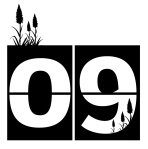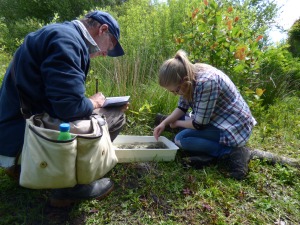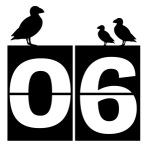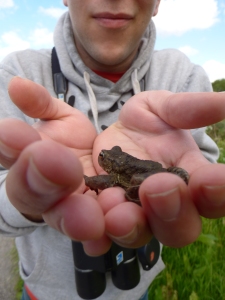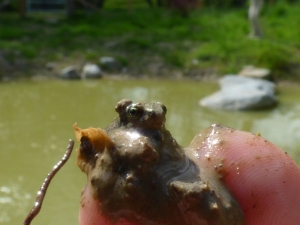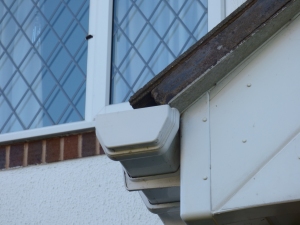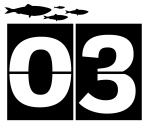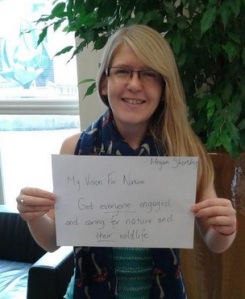Day Nine of Megan & Matt Go Wild!
Welcome to our joint-blogging series for the Wildlife Trusts’ 30 Days Wild Challenge – you can read more about the campaign and ourselves in our introduction page.
Megan (in coastal Dorset)
Today’s 30 Days Wild Theme was appreciating meadows. These wonderful habitats are scarce indeed, but are vitally important for our wildlife!
After a pond dipping session with a local school group (plenty of newts, dragonfly nymphs and snails!), we headed over to the meadow to look for minibeasts (aka insects and other invertebrates) there. Some fervent swishing later and I think the best find was a real big green cricket. Unfortunately I didn’t have my camera on me at the time.
I went back after my working hours to try and get some meadow photos as most of my photos at Lorton have been of the pond or butterflies. I even took a selfie! And yes … I am wearing my hair in plaits. I know they are rather Pippi Longstocking-esque, but they are perfect for keeping my hair out the way whilst working.
Matt (in Cambridge/Sandy)
I’m focussing on an indoor activity today: for the first time this season I managed to catch up with BBC Springwatch. I was taking the helm of the RSPB’s twitter account and watched the show while live tweeting.
I love Springwatch but haven’t had a free evening to watch an episode yet.
Normally, I think it’s far better to get outside than sit in front of a screen.
But, I am definitely able to appreciate the power of technology – radio tags for adders, slow-mo cameras for dragonflies, night-vision cameras for intrepid, obstacle course mice (all on Springwatch tonight) – to help people connect with nature and see new sides of it.
And even just twitter can open up conversations and help to share wildlife.
You can’t be outside 24-7, so sometimes technology has an important role to play.
And those who agree should follow a project of mine I’ll be writing more about soon – #rainforestlive on 19 June.

